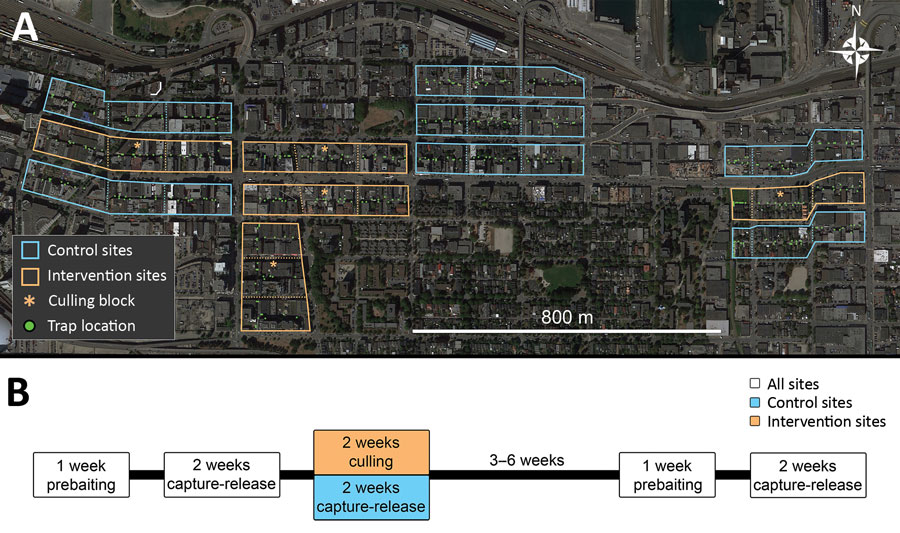Culling of Urban Norway Rats and Carriage of Bartonella spp. Bacteria, Vancouver, British Columbia, Canada
Kaylee A. Byers
1
, Michael J. Lee
1, Janet E. Hill, Champika Fernando, Laura Speerin, Christina M. Donovan, David M. Patrick, and Chelsea G. Himsworth
Author affiliations: The University of British Columbia School of Population and Public Health, Vancouver, British Columbia, Canada (K.A. Byers, M.J. Lee, C.M. Donovan, D.M. Patrick); The University of British Columbia, Vancouver (K.A. Byers, C.G. Himsworth); Canadian Wildlife Health Cooperative, Abbotsford, British Columbia, Canada (K.A. Byers, M.J. Lee, C.G. Himsworth); University of Saskatchewan, Saskatoon, Saskatchewan, Canada (J.E. Hill, C. Fernando, L. Speerin); British Columbia Centre for Disease Control, Vancouver (D.M. Patrick); British Columbia Ministry of Agriculture, Abbotsford (C.G. Himsworth)
Main Article
Figure

Figure. Trapping locations for Norway rats (Rattus norvegicus) caught in Vancouver, British Columbia, Canada. A) Trapping sites consisting of 3 contiguous city blocks. Each site was designated as a control or intervention site. Control sites did not involve culling (lethal animal removal); intervention sites included culling in the central block. B) Depiction of the study timeline. We first baited traps without capture to acclimatize rats to traps, then trapped and tagged rats with numbered ear tags and released the rats to their site of capture. After an intervention that involved culling rats in intervention sites, we resampled 3–6 weeks later to determine whether Bartonella spp. carriage differed between trapping periods before and after the intervention.
Main Article
Page created: June 23, 2022
Page updated: July 20, 2022
Page reviewed: July 20, 2022
The conclusions, findings, and opinions expressed by authors contributing to this journal do not necessarily reflect the official position of the U.S. Department of Health and Human Services, the Public Health Service, the Centers for Disease Control and Prevention, or the authors' affiliated institutions. Use of trade names is for identification only and does not imply endorsement by any of the groups named above.
